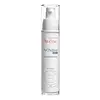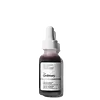What's inside
What's inside
 Key Ingredients
Key Ingredients

 Benefits
Benefits

 Concerns
Concerns

 Ingredients Side-by-side
Ingredients Side-by-side

Water
Skin ConditioningTriethylhexanoin
MaskingCyclopentasiloxane
EmollientCetearyl Alcohol
EmollientCyclohexasiloxane
EmollientCeteareth-20
CleansingPolymethyl Methacrylate
Ceteareth-33
CleansingCaprylic/Capric Triglyceride
MaskingAmmonium Acryloyldimethyltaurate/Vp Copolymer
Benzoic Acid
MaskingBHT
AntioxidantCaramel
Cosmetic ColorantDisodium EDTA
Mica
Cosmetic ColorantOenothera Biennis Oil
EmollientOleoyl Dipeptide-15
Skin ConditioningOleoyl Tetrapeptide-31
AntioxidantPhenoxyethanol
PreservativeCI 17200
Cosmetic ColorantRetinal
Skin ConditioningSilica
AbrasiveSodium Hydroxide
BufferingCI 77891
Cosmetic ColorantTocopherol
AntioxidantTocopheryl Glucoside
EmollientWater, Triethylhexanoin, Cyclopentasiloxane, Cetearyl Alcohol, Cyclohexasiloxane, Ceteareth-20, Polymethyl Methacrylate, Ceteareth-33, Caprylic/Capric Triglyceride, Ammonium Acryloyldimethyltaurate/Vp Copolymer, Benzoic Acid, BHT, Caramel, Disodium EDTA, Mica, Oenothera Biennis Oil, Oleoyl Dipeptide-15, Oleoyl Tetrapeptide-31, Phenoxyethanol, CI 17200, Retinal, Silica, Sodium Hydroxide, CI 77891, Tocopherol, Tocopheryl Glucoside
Glycolic Acid
BufferingWater
Skin ConditioningAloe Barbadensis Leaf Water
MaskingSodium Hydroxide
BufferingDaucus Carota Sativa Extract
PerfumingPropanediol
SolventCocamidopropyl Dimethylamine
EmulsifyingSalicylic Acid
MaskingLactic Acid
BufferingTartaric Acid
BufferingCitric Acid
BufferingPanthenol
Skin ConditioningSodium Hyaluronate Crosspolymer
HumectantTasmannia Lanceolata Fruit/Leaf Extract
AntioxidantGlycerin
HumectantPentylene Glycol
Skin ConditioningXanthan Gum
EmulsifyingPolysorbate 20
EmulsifyingTrisodium Ethylenediamine Disuccinate
Potassium Sorbate
PreservativeSodium Benzoate
MaskingEthylhexylglycerin
Skin Conditioning1,2-Hexanediol
Skin ConditioningCaprylyl Glycol
EmollientGlycolic Acid, Water, Aloe Barbadensis Leaf Water, Sodium Hydroxide, Daucus Carota Sativa Extract, Propanediol, Cocamidopropyl Dimethylamine, Salicylic Acid, Lactic Acid, Tartaric Acid, Citric Acid, Panthenol, Sodium Hyaluronate Crosspolymer, Tasmannia Lanceolata Fruit/Leaf Extract, Glycerin, Pentylene Glycol, Xanthan Gum, Polysorbate 20, Trisodium Ethylenediamine Disuccinate, Potassium Sorbate, Sodium Benzoate, Ethylhexylglycerin, 1,2-Hexanediol, Caprylyl Glycol
 Reviews
Reviews

Alternatives
Ingredients Explained
These ingredients are found in both products.
Ingredients higher up in an ingredient list are typically present in a larger amount.
Sodium Hydroxide is also known as lye or caustic soda. It is used to adjust the pH of products; many ingredients require a specific pH to be effective.
In small amounts, sodium hydroxide is considered safe to use. However, large amounts may cause chemical burns due to its high alkaline.
Your skin has a natural pH and acid mantle. This acid mantle helps prevent harmful bacteria from breaking through. The acid mantle also helps keep your skin hydrated.
"Alkaline" refers to a high pH level. A low pH level would be considered acidic.
Learn more about Sodium HydroxideWater. It's the most common cosmetic ingredient of all. You'll usually see it at the top of ingredient lists, meaning that it makes up the largest part of the product.
So why is it so popular? Water most often acts as a solvent - this means that it helps dissolve other ingredients into the formulation.
You'll also recognize water as that liquid we all need to stay alive. If you see this, drink a glass of water. Stay hydrated!
Learn more about Water